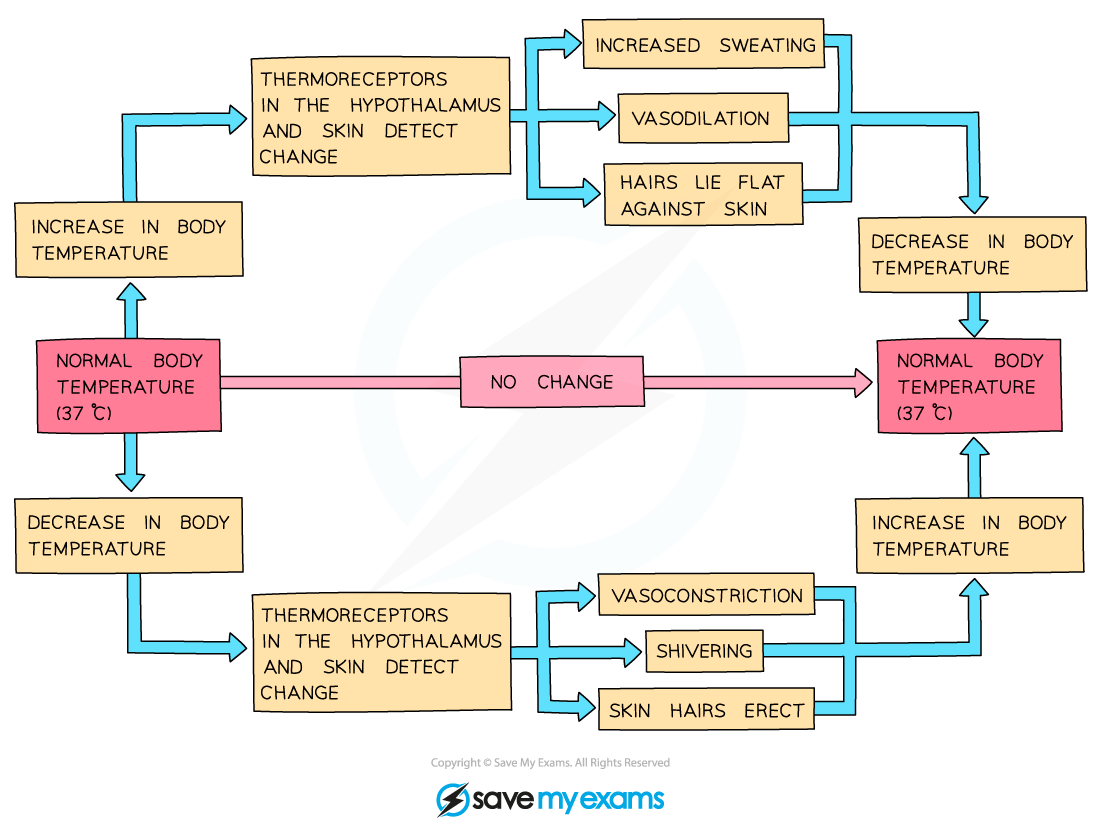Homeostasis: Temperature Control (Cambridge (CIE) IGCSE Biology): Revision Note
Exam code: 0610 & 0970
Did this video help you?
The skin & homeostasis: extended
Control of body temperature is a homeostatic mechanism
Homeostasis is the maintenance of a constant internal environment
This means that internal conditions within the body (such as temperature, blood pressure, water concentration and glucose concentration) need to be kept within set limits in order to ensure that reactions in body cells can function
The human body maintains the temperature at which enzymes work best: around 37°C
If body temperature increases too far above this, enzymes will denature and become less effective at catalysing reactions
The skin and temperature regulation
The skin plays an important role in the control of body temperature
Structures in the skin that are involved with temperature regulation include:
sweat glands
temperature receptors
capillaries
hairs
hair erector muscles
insulating fatty tissue

When skin temperature changes, temperature receptors in the skin send nerve impulses to the brain via sensory neurones
The brain responds to this information by sending nerve impulses to effectors in the skin that act to maintain normal body temperature, e.g.:
in response to an increase in body temperature:
sweat glands produce sweat which cools the skin by evaporation
blood vessels that supply the skin capillaries dilate
hairs on the skin surface lie flat
in response to a decrease in body temperature:
sweat gland stop producing sweat
blood vessels that supply the skin capillaries constrict
hairs on the skin stand up to trap an insulating layer of air
shivering generates heat in the muscles


Vasoconstriction & vasodilation: extended
The blood vessels in and below the skin aid temperature regulation by vasoconstriction and vasodilation
Vasoconstriction
When we are cold the blood vessels that supply capillaries in the skin constrict, or get narrower; this is known as vasoconstriction
Vasoconstriction reduces blood flow to the skin, and so reduces the heat lost from blood by radiation at the skin surface

Vasodilation
When we are hot the blood vessels that supply capillaries in the skin dilate, or get wider; this is known as vasodilation
Vasodilation increases blood flow to the skin surface, and so increases heat lost at the skin by radiation


Unlock more, it's free!
Did this page help you?